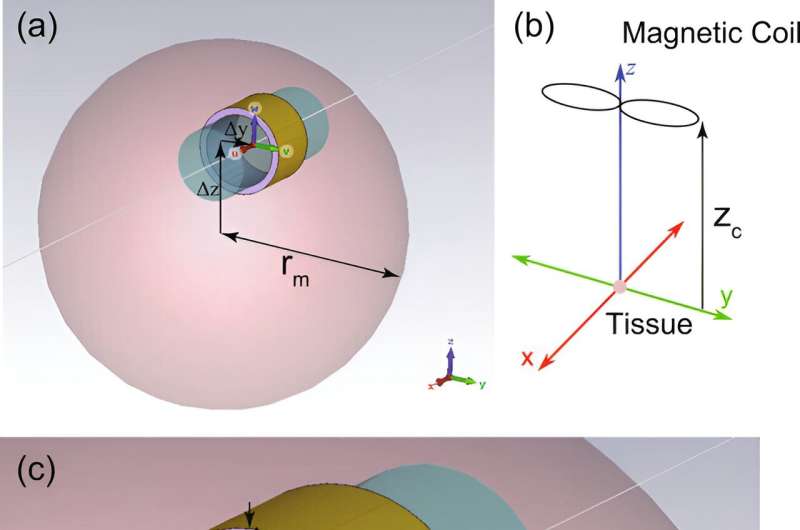This article has been reviewed according to Science X's editorial process and policies. Editors have highlighted the following attributes while ensuring the content's credibility:
fact-checked
peer-reviewed publication
trusted source
proofread
Perfecting the performance of nerve implants

Researchers are extending their understanding of the effectiveness of electrical fields that are increasingly being used in implants to stimulate and repair damaged nerves. Effective nerve stimulation is the key to helping alleviate debilitating conditions such as sciatica.
"From the soldier on the battlefield to people involved in car crashes the long-term effects of nerve injuries can severely affect sufferers," said the University of Adelaide's Professor Giuseppe Tettamanzi, senior lecturer, School of Chemical Engineering.
"Transcutaneous electric nerve stimulation (TENS) is a commonly used electrical stimulation method in implants. Many of the current implants are quite invasive so it's important to understand how to maximize their effectiveness.
"Simple electrical circuitry in an implant can be applied to damaged nerves to help repair and reconstruct them."
This technology was invented by Professor Antonio Lauto from UWS, Sydney. The implants are surgically placed under the skin around the damaged nerve with power in early versions provided externally. Innovative graft‐antenna implants that are powered wirelessly, are increasingly being used. They are minimally invasive devices that function both as a wireless stimulator and a structure around which nerves can rebuild. The implants use a gold band which produces an electrical field around it.
The team has used several sophisticated computational electromagnetic techniques incorporated in a mouse model to hypothetically examine the effect of the circuitry implanted via patches inserted near affected nerves. They have published their work in the journal Bioelectromagnetics.
Luke Smith, who is the leading author in this research, undertook an honors project in his final year of his bachelor's degree project at the University of Adelaide under the supervision of Professor Tettamanzi and Professor Christophe Fumeaux, to explain the microscopic nature of the effect of electrical stimulation. He is currently undertaking a Ph.D. at the University's Australian Institute for Machine Learning.
"Our work shows that when the simple metallic circuitry in the patch inserted near the neuronal materials, is irradiated with the commonly used transcranial magnetic stimulation (TMS), it acts as a focalizer for the electromagnetic signal that ultimately activates neurons in the neural material," he said.
"This ultimately speeds up tremendously the process of repairing damaged neuronal material.
"Electrical stimulation of nerves is due primarily to the electric fields created at the edge of the ring which sets up high‐intensity field gradients in a small region around it. Our computational model demonstrates that direct contact between the ring and nerve ensures neural activation."
Nerve damage usually takes longer than three months to repair and sufferers are at increased risk of depression because of the debilitating effects of conditions like sciatica.
People suffering from pain due to nerve damage may need to resort to opioids for pain relief with all the associated risks of addiction and extra burden on health systems.
"This work, which is currently evolving, could benefit people with injuries and with neurodegenerative diseases. The knowledge that we have generated may help in future research," said Tettamanzi.
More information: Luke A. Smith et al, Investigation of the mechanisms for wireless nerve stimulation without active electrodes, Bioelectromagnetics (2023). DOI: 10.1002/bem.22486



















